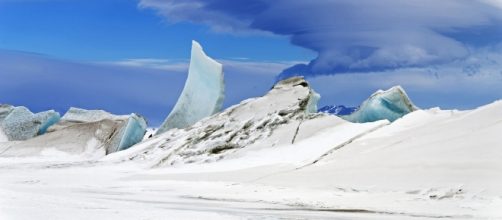A group of scientists suggests that there is life thriving beneath the barren Antarctic ice. The discovery of an extensive Cave System around one of the ice region’s active volcanoes led researchers to hypothesize that its climate could be kind enough to offer the level of warmth that supports life.
Is there life beneath the Antarctic ice?
The Antarctic region is often described as a barren ice desert. With the region’s freezing temperature that ranges from negative 10 to 55 degrees Celsius, the Antarctic ice usually arises to 1.9 km thick. A group of researchers discovered an extensive cave system around one of the region’s active volcanoes.
This breakthrough led researchers to believe that there is life lurking beneath Antarctic.
According to Popular Mechanics, a group of scientists hailing from the Australian National University have discovered an extensive system of caves around one of Antarctica's active volcanoes called Mount Erebus. The team is convinced that deep within the freezing temperatures of the region, these caves host warm temperatures that support both plant and animal life.
Mount Erebus is located on the Ross Island, According to the research, the wide system of caves around the active volcano was carved when the ice began to melt due to the steam coming from volcanic activity. In the course of exploring the cave system, the researchers collected soil samples that were later subjected to laboratory tests.
According to lead project scientist Ceridwen Fraser, the forensic analysis of the collected samples revealed DNA traces which were similar to that of mosses, algae, and small invertebrates.
Are there unknown species waiting to be discovered in Antarctica?
According to lead researcher Ceridwen Fraser, laboratory tests on the soil samples sourced from the Antarctic caves reveal that some of the DNA sequences found do not match to any known organism on Earth. The researchers believe that the unidentified DNA strands belong to Animal And Plant species that are unknown to date. Fraser highlights that the result of their study could be the first glimpse that will lead humans to discover a whole new set of animal and plant species in the Antarctic.
Despite the harsh Antarctic temperature, the heat emanating from the region’s volcanoes could have influenced the environment of the caves. Co researcher Charles Lee from the University of Waikato in New Zealand highlights that apart from Mount Erebus, Antarctica hosts several other volcanoes that may have also formed subglacial cave systems.
But amidst recent breakthroughs, there is still very little information on the Antarctic biodiversity. Fraser highlights that the results of their study support the need to explore the region’s cave systems in greater detail.


